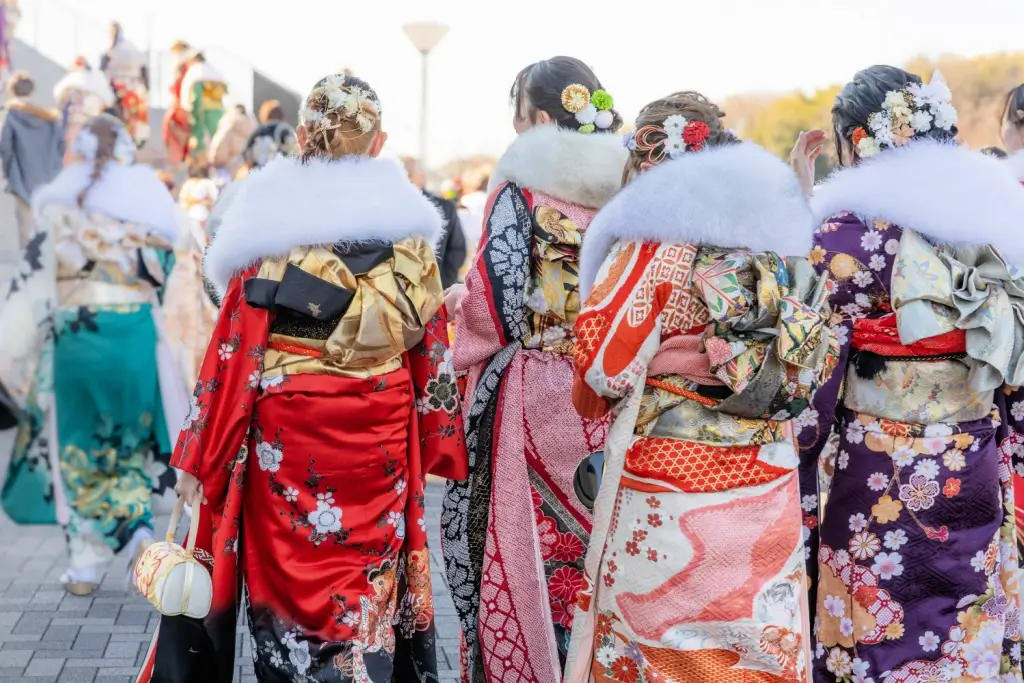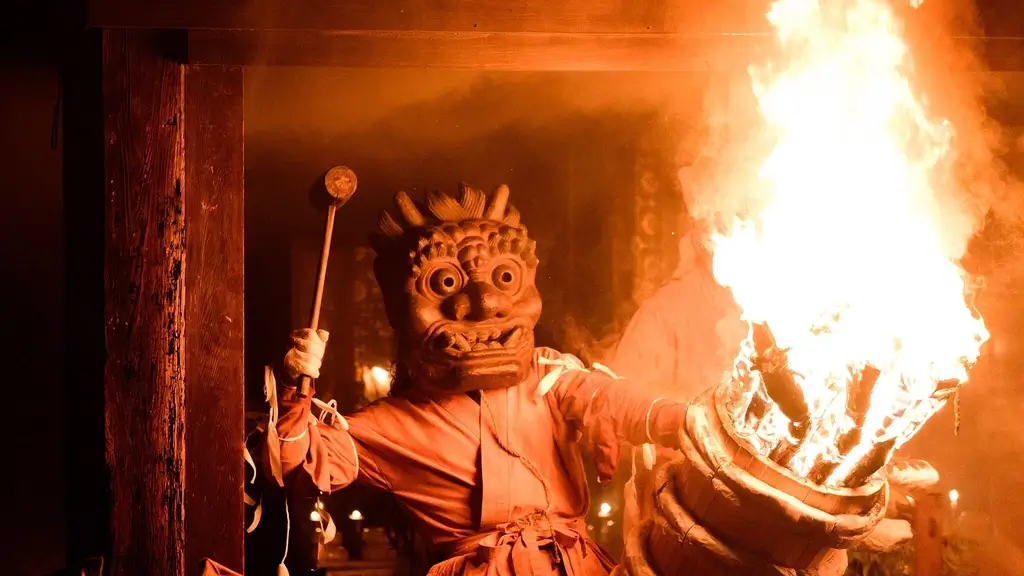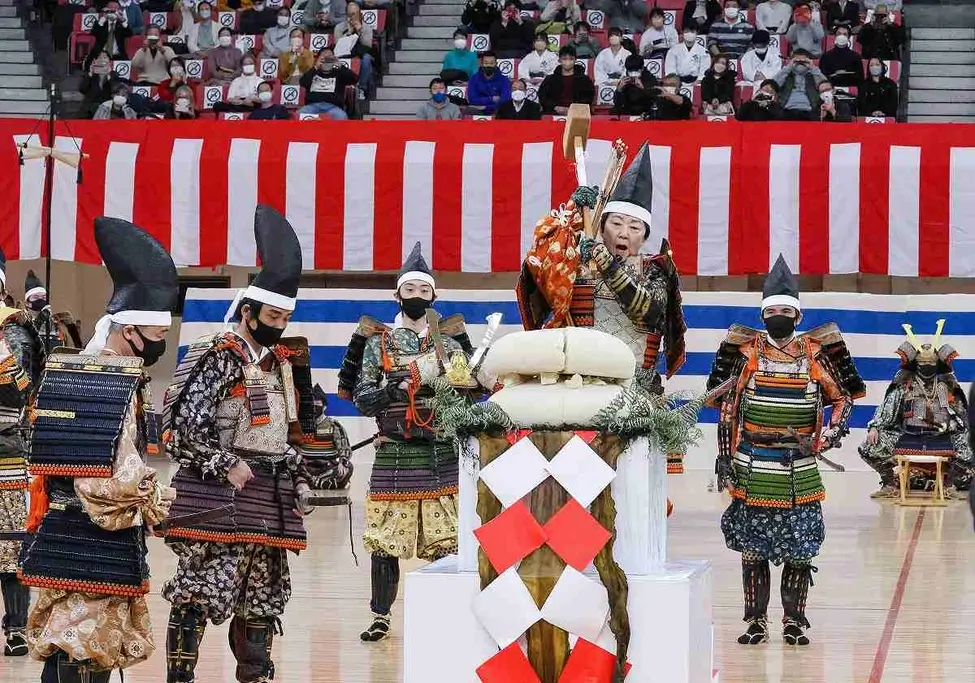Japan in January: Five Festivals to Welcome the New Year!

Sophia Wasylinko
Posted on December 16, 2024
Share:

Traveling to Japan in January might seem unwise, with the cooler weather and fewer tourist attractions open. However, it is the perfect time of year, not just because of less crowding but also because of the unique cultural events starting the New Year.
These celebrations, from ancient demon and fire rituals to martial arts and armor displays, are worth attending, especially for foreign tourists and first-timers. Here is a closer look at five festivals happening in Japan in January.
Dontosai Festival (January 14)
Attendees of one of Miyagi Prefecture’s oldest festivals, the Dontosai Festival, burn the previous year’s New Year decorations and books or photos containing bad memories to ask for good health and fortune. Men wearing loincloths or shorts also make the silent hadaka mairi (naked pilgrimage) to the main shrine for prayers.

While Dontosai celebrations occur across Miyagi Prefecture, the largest occurs at Sendai’s Osaki Hachimangu Shrine. The ceremony starts at 5 pm, once the fires are lit and the hadaka mairi begins its march. Visitors of all religious backgrounds are invited to pray at the shrine and buy food and souvenirs from vendors at the nearby market.
Oni Hashiri (January 14)
Occurring on the same day as our previous entry, the over 500-year-old Oni Hashiri also features fire. However, the Nara’s Nenbutsu Temple event adds chases and fearsome masks. Translating to “Demon Run,” Oni Hashiri presents demons as bringers of good luck and fortune instead of their usual association with evil and curses.

The festival begins during the day with readings of Buddhist sutras and a smaller oni hashiri. But the main event occurs in the evening with the lighting of the fires and the second demon run. Locals dressed as demons or ogres run around the temple three times carrying purifying torches. It’s a sight to behold, especially for out-of-town attendees.
Are you looking for great snacks for January? Sakuraco delivers traditional Japanese sweets, snacks, and tableware from across Japan to your door monthly so you can have an authentic Japanese experience at your convenience!
Ome Daruma Ichi (January 12)

First held in 1441 or 1596, the Ome Daruma Ichi (Market) originally sold mayu-dama rice cakes to bless the silkworm industry. Now, it sells lucky Daruma dolls, primarily red but also available in white, gold, and blue. The dolls have blank eyes; one is painted when a wish is made and the other when granted. The market occurs on the Kyu Ome Kaido (Old Ome Highway) in Ome City, Tokyo, from 1 to 8 p.m. At nearby Sumiyoshi Shrine, fires burn old dolls from 10 am to 8 pm, and participants can get free replacements.
Kagami-Birakishiki (January 13)
This next event marks the New Year and a special milestone for Japanese youth. Kagami-Biraki (breaking the mirror) is when the kagami mochi is broken and eaten for good luck. It’s been added to other ceremonies, including the Coming of Age Day celebration for people who have turned or are turning 20 (Japan’s age of majority).

Kagami-Birakishiki combines various traditions, such as yoroi-kizome (samurai wearing their new or first armor set) and budo-hajime (martial arts exhibition). These displays of samurai armor and weapons and demonstrations of traditional Japanese martial arts like judo, sumo, and kyūdō (Japanese archery) occur yearly at Tokyo’s Nippon Budokan Hall.
Wakakusa Yamayaki (January 25)
This final entry returns to Nara and the theme of fire. Nara Park’s Wakakusa Yamayaki (mountain burning) occurs almost yearly. Its origins are unclear; some theories claim that the festival was started to drive away wild boars or bad luck. Another story states that the mountain was burned during a boundary dispute between two temples.

Before Mt. Wakakusa’s burning, there are several events: a senbei-throwing competition, a torch procession, and a 15-minute fireworks show. The hillside is lit with flames from a large bonfire, taking 30 minutes to an hour for the entire mountain to burn. It’s truly a sight to behold!
Why should I go to these events in Japan in January?
These events show a different side of Japan in January. Instead of engaging in the usual activities, such as playing a winter sport or soaking in a hot spring, you will learn more about Japanese history and culture through these ancient festivals. Tourists should visit Nara and Sendai to experience their local festivities.
Finally, if you need additional persuasion, each celebration highlighted here invites prosperity and wishes for the New Year. Participants should attend at least one of them if they want a great time and a good start to 2025.
Traveling to Japan in winter is an unusual yet rewarding experience. Besides the thrills of snow and ice, there is the excitement of a new calendar year. Japan had various goings-on in January connected to this transition, including visits to shrines, purifying fires, and martial arts exhibitions. Rest assured that each one will bring you the blessings needed for 2025. Are there any other festivals in January that we should have mentioned? Tell us in the comments below. And to all our readers, we wish you an excellent 2025!

Discover authentic flavors with Sakuraco
Get Sakuraco 

Discover authentic flavors with Sakuraco
Get Sakuraco 
Related Articles

Toshigami and the New Year: How Shinto Welcomes a Sacred Visitor
In the Shinto tradition, Toshigami is the deity who arrives at the end of every year and remains through the New Year to bring blessings, a bountiful harvest, and good fortune. People in Japan honor Toshigami at the turn of the year with rituals, decorations, and special foods.

Japan in Winter: Why Are Illuminations Important?
Winter illuminations have become a tradition in Japan at the start of every Christmas season. Their sparkling brilliance chases away the cold of Japan in winter and encourages people to enjoy festive year-end activities. Let’s explore the origins and the amazing spots of winter illuminations in this beautiful country!

Behind the Camera with Rachel and Jun: Stories from Everyday Life in Japan
We had a lovely chat with Rachel and Jun about their story, from their early beginnings to how their videos continue to inspire people around the world. We’ve gathered and crafted their reflections into this special feature, so you can experience their story in a way that feels just like their videos: warm, genuine, and…

Japanese Ceramics: The Alluring Wares of Shippo Yaki
Imagine holding a small dish that glows as if sunlight is trapped inside it. This perfect example of Japanese ceramics resembles glass, with its colors deep and luminous, outlined with threads of silver. That’s the magic of shippo yaki.



